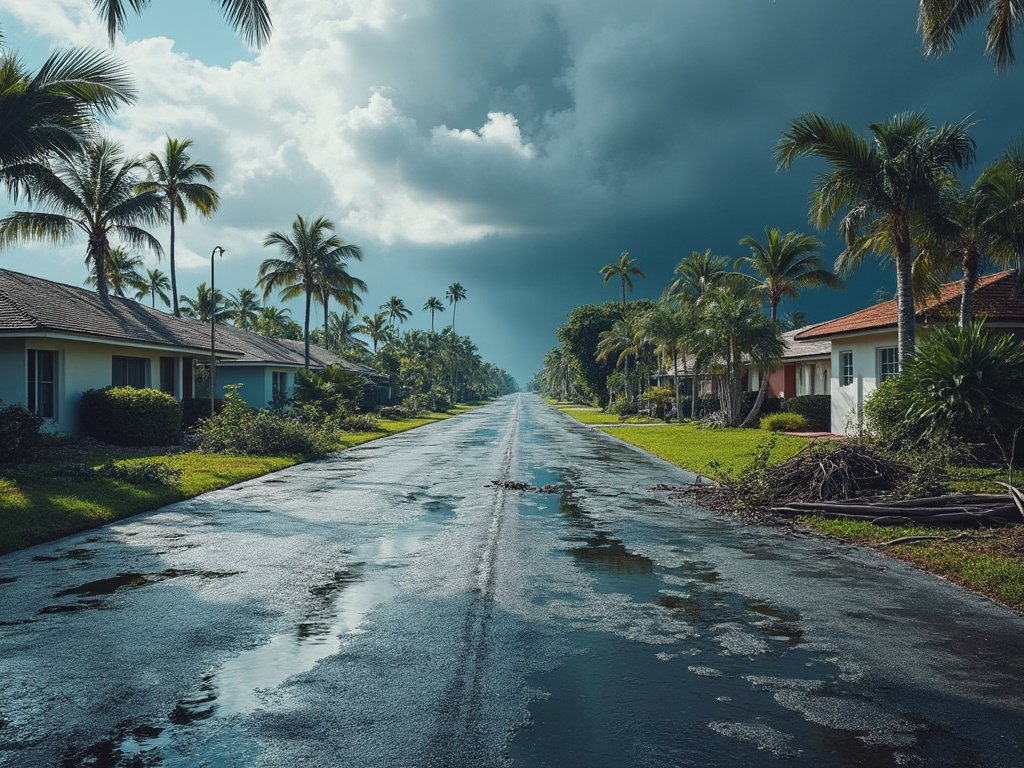The 2024 Atlantic hurricane season delivered a brutal reminder of nature’s fury as Hurricane Helene swept across Florida. Though the eye of the storm made landfall in Florida’s Big Bend as a Category 4 hurricane, its impact was felt far and wide, including Miami-Dade County. Helene’s immense size and power, with winds surpassing 140 mph, brought widespread destruction, flash flooding, and power outages to many areas, reshaping daily life for thousands of residents.
Overview of the Hurricane’s Path and Destruction
Hurricane Helene struck Florida’s Gulf Coast late September 2024, unleashing unprecedented storm surges, heavy rainfall, and high winds. The Big Bend area bore the brunt of the storm’s direct hit, with entire communities facing structural collapse, overwhelming storm surges, and flooded streets. However, Helene’s size meant that even cities as far south as Miami and the Florida Keys, which were hundreds of miles from the storm’s core, faced significant indirect consequences.
While the most severe destruction occurred in the Big Bend region, Miami-Dade experienced sustained tropical-storm-force winds and torrential rain from Helene’s outer bands. Wind gusts in Miami reached up to 70 mph, with frequent downpours that accumulated more than four inches of rain in less than 24 hours.
Impact on Miami-Dade Infrastructure
The storm surge threat in Miami-Dade was minimal, as Helene’s eye remained distant. However, flash floods became a significant issue in parts of Miami, especially low-lying areas such as Brickell and parts of Hialeah. Roadways were submerged, and city infrastructure, already stressed by persistent issues related to sea-level rise, struggled to handle the relentless downpour. Drainage systems, though modernized in recent years, were overwhelmed by the rapid accumulation of water, causing temporary flooding in key areas.
Power outages became a widespread problem across Miami-Dade, leaving over 200,000 residents without electricity at the height of the storm. The high winds caused trees to topple and downed power lines, further contributing to the blackout. For many, these outages lasted for several days, leaving families without access to air conditioning, internet, and other essential utilities. Miami International Airport faced widespread delays and cancellations, as over 40 flights were disrupted by the severe weather conditions.
Economic Fallout and Community Impact
The aftermath of Hurricane Helene exacerbated existing vulnerabilities in Miami-Dade’s housing and business sectors. Local businesses faced significant disruptions, especially small enterprises that operate in flood-prone areas. As cleanup efforts began, many business owners and residents faced high repair costs, leading to financial strain in an already expensive housing market.
The storm also highlighted Miami-Dade’s ongoing struggles with affordable housing. Many of the most vulnerable communities—those living in poorly maintained buildings or flood-prone areas—suffered the most. The need for hurricane-resistant infrastructure and long-term disaster recovery plans became painfully evident. Emergency shelters, already stretched thin, were overburdened with displaced residents seeking refuge from flooded homes.
Miami-Dade’s Resilience and Ongoing Recovery Efforts
Despite the damage, the people of Miami-Dade demonstrated remarkable resilience in the face of adversity. First responders, local government agencies, and community organizations quickly mobilized to provide aid and support. The Miami-Dade County Department of Emergency Management (DEM) played a pivotal role in coordinating disaster relief, working alongside federal agencies like FEMA to ensure that residents received food, water, and temporary housing assistance.
In addition, Miami-Dade’s robust emergency preparedness systems, built up over years of facing hurricane threats, helped mitigate the storm’s effects. Local authorities had already issued evacuation orders for at-risk areas and opened shelters before the worst of the storm hit. This proactive response undoubtedly saved lives, but the recovery will still be a long process, especially for low-income families who face more significant barriers to rebuilding.
As part of its long-term hurricane strategy, Miami-Dade officials have increasingly turned their attention to climate adaptation measures. The storm underscored the urgency of these plans, with city planners discussing how best to fortify Miami’s infrastructure against future storms that are expected to grow stronger and more frequent. Efforts to elevate roads, improve drainage systems, and retrofit buildings to better withstand high winds will be key to ensuring the city can handle future hurricanes.
Environmental Consequences
Beyond the immediate human and infrastructural impacts, Helene’s passage left an indelible mark on the environment. Coastal erosion worsened along Miami’s beaches, with several stretches of sand washed away. The Everglades, a vital ecosystem near Miami-Dade, also suffered from saltwater intrusion and flooding, which threatens wildlife and plant life in the area. Conservation efforts will need to ramp up to prevent long-term ecological damage from this storm.
Wildlife habitats, particularly in the Biscayne Bay and surrounding wetlands, experienced disturbances from Helene’s storm surge and heavy rainfall. This disrupted migratory patterns of birds and marine life, raising concerns about the long-term health of these critical ecosystems. Local environmental organizations have already called for increased funding and support for restoration projects to mitigate the damage caused by Helene.
Lessons for the Future
Hurricane Helene has reinforced several critical lessons for Miami-Dade County. First, the storm proved that even indirect impacts from a major hurricane can cause severe damage. While Miami has invested heavily in hurricane preparedness, the storm made it clear that more needs to be done to strengthen flood defenses, upgrade infrastructure, and address the housing crisis that leaves so many residents vulnerable.
Second, the storm served as a reminder that hurricanes are not just a coastal issue. Even inland areas, far removed from the storm’s core, can experience destructive flooding and wind damage. Miami-Dade’s experience with Helene has prompted a renewed focus on comprehensive disaster preparedness and climate resilience across all parts of the county.
Lastly, Hurricane Helene has highlighted the importance of community solidarity in the face of disaster. While government agencies and emergency services play crucial roles, local residents and volunteers have shown that they are often the first line of defense when catastrophe strikes. Neighborhood groups, churches, and community organizations were instrumental in providing immediate aid, helping their neighbors clear debris, and offering emotional support in the wake of the storm.
Updates:
As of October 2024, power has been largely restored in Miami-Dade County following the widespread outages caused by Hurricane Helene. Florida Power & Light (FPL) crews worked swiftly to restore electricity to approximately 85% of impacted customers within the first 12 hours after the hurricane passed. However, in areas where heavy flooding or debris blocked access, power restoration took slightly longer. Most of Miami-Dade County’s power was restored by September 28, though isolated outages may have persisted in the hardest-hit areas, especially where floodwaters delayed repairs.
Statewide, over 2.3 million homes regained power within the first week after Helene, reflecting the massive restoration effort across Florida. Miami-Dade, though spared from the worst of the hurricane’s core, still faced challenges with downed power lines and infrastructure damage. By October 1, nearly all affected customers in the county had power restored.
Efforts are continuing to ensure that remaining localized outages are addressed, particularly in areas that suffered the most from the storm’s winds and rains. FPL and emergency management teams are also reminding residents to stay vigilant of downed power lines and potential hazards as cleanup continues.
Miami-Dade residents are encouraged to monitor official channels for updates and remain cautious in the aftermath of the storm.





